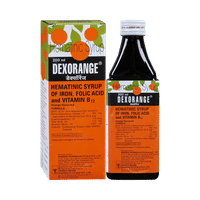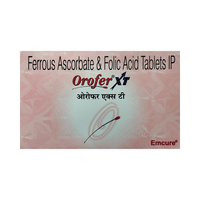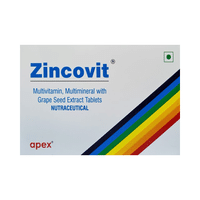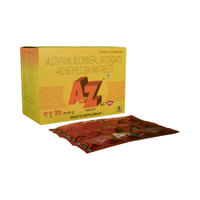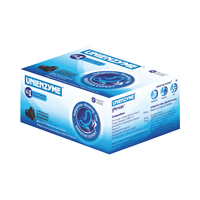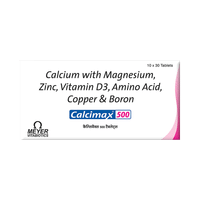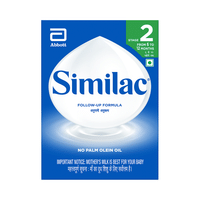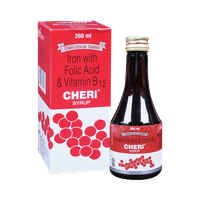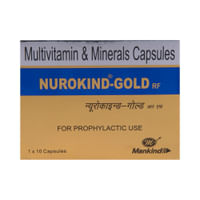Analar Eye Drop
Rs.67for 1 packet(s) (10 ml Eye Drop each)
food interaction for Analar
alcohol interaction for Analar
pregnancy interaction for Analar
lactation interaction for Analar
food
alcohol
pregnancy
lactation
No interaction found/established
No interaction found/established
Information regarding the use of Analar Eye Drop during pregnancy is not available. Please consult your doctor.
CONSULT YOUR DOCTOR
Information regarding the use of Analar Eye Drop during breastfeeding is not available. Please consult your doctor.
CONSULT YOUR DOCTOR
SALT INFORMATION FOR Analar
Naphazoline(0.05% w/v)
Uses
Naphazoline is used in eye Irritation. It soothes eyes which have been irritated by dusty atmospheres, wind, swimming, smoke, air pollutants, or close work such as reading and computer use.
How it works
Naphazoline narrows the blood vessels in the eye, thereby reducing redness and swelling.
Common side effects
Dilatation of pupil, Headache, Dizziness, Blurred vision, Increased intraocular pressure, Weakness, Arrhythmia (irregular heartbeats), Nausea, High blood pressure, Eye redness, Eye irritation, Eye discomfort, Punctate keratitis, Lacrimation (flow of tears), Sweating, Nervousness, Drowsiness, Increased glucose level in blood
Chlorpheniramine Maleate(0.01% w/v)
Uses
Chlorpheniramine Maleate is used in the treatment of allergic conditions.
How it works
Chlorpheniramine Maleate is an antiallergic medication. When your body is exposed to an allergen (pollen, animal dander, house dust etc.), it produces a chemical called histamine. This causes watery eyes, runny or blocked nose, sneezing, skin rashes, itching etc. Chlorpheniramine Maleate works by blocking the action of histamine, thereby relieving these symptoms.
Common side effects
Dryness in mouth, Sleepiness, Nausea, Headache, Sedation, Difficulty in paying attention, Impaired coordination, Dizziness, Blurred vision, Fatigue
Phenylephrine(0.12% w/v)
Uses
Phenylephrine is used in common cold.
How it works
Phenylephrine is a decongestant. It works by narrowing the small blood vessels which provides temporary relief from inflammation (redness and swelling) and discomfort.
Common side effects
Nausea, Vomiting, Headache, High blood pressure, Arrhythmia (irregular heartbeats), Blurred vision, Breathlessness, Itching, Restlessness, Reflex bradycardia, Excitation, Epigastric pain, Neck pain, Tremors, Hypertensive crisis, Eye pain, Stinging in the eyes, Photophobia, Conjunctival sensitivity, Preterm and low birth weight infants, Fainting, Myocardial infarction, Subarachnoid hemorrhage
Hydroxypropylmethylcellulose(0.2% w/v)
Uses
Hydroxypropylmethylcellulose is used in the treatment of dry eyes.
How it works
Hydroxypropylmethylcellulose is a lubricant. It works similar to natural tears and provides temporary relief from burning and discomfort due to dryness of the eye.
Common side effects
Blurred vision, Eye pain, Eye irritation, Eye itching, Eye discharge, Increased lacrimation, Hypersensitivity, Ocular hyperemia, Superficial corneal injuries, Corneal abrasion
Boric Acid(1.25% w/v)
Uses
Boric Acid is used to prevent infections.
How it works
Boric Acid is an antiseptic which treats infection in the affected area and relieves irritation.
Common side effects
Increased liver enzymes, Abdominal pain, Allergic reaction, Burning sensation, Irritation, CNS stimulation, Central nervous system depression, Diarrhea, Rash, Vomiting
Menthol(0.005% w/v)
Uses
Menthol is used in the treatment of throat irritation.
How it works
Menthol works by producing a mild anesthetic action causing numbness and a cooling sensation in the area of application.
Common side effects
Camphor(0.01% w/v)
Uses
Camphor is used in the treatment of itching and dermatitis.
How it works
Camphor belongs to the class of medicines called rubefacients/antitussives. When applied to the skin, it increases blood flow and local temperature of the affected area which suppresses and temporarily relieves pain sensations. It also eases cough, nasal/throat irritation by moistening air passages when used along with steam.
Common side effects
Skin irritation, Hypersensitivity, Irritation of ear, Allergic skin rash
SUBSTITUTES FOR Analar
1 Substitutes
1 Substitutes
Sorted By
 Rs. 100pay 46% more per ml of Eye Drop
Rs. 100pay 46% more per ml of Eye Drop
Expert advice FOR Analar
- Naphazoline should be used as per dose and duration suggested by the doctor.
Frequently asked questions FOR Analar
Naphazoline
Q. Is Naphazoline safe?
Naphazoline is safe if taken at prescribed dose and duration as advised by your doctor.
Chlorpheniramine Maleate
Q. Does chlorpheniramine or chlorpheniramine maleate cause increase in blood pressure/ drowsy/non drowsy/sedating/get you high/keep you awake/sleepiness/make you tired/weight gain?
Chlorpheniramine causing these side effects is common or rare. Always consult your doctor, if you experience any of these side effects
Q. Is chlorpheniramine like Benadryl?
No, chlorpheniramine is different from Benadryl
Q. Is chlorpheniramine prescription?
Yes, it is available with doctor’s prescription only
Phenylephrine
Q. Is it safe to use Phenylephrine?
Yes, Phenylephrine is safe for most of the patients. However, in some patients, it may cause side effects like nausea, vomiting, headache, fatigue, dizziness, dryness in the mouth, sleepiness and allergic reaction. If you experience any persistent problem while taking this medication, inform your doctor as soon as possible.
Q. Can the use of Phenylephrine cause dizziness?
Yes, the use of Phenylephrine can cause dizziness (feeling faint, weak, unsteady or lightheaded) in some patients. If you feel dizzy or lightheaded, it is better to rest for sometime and resume once you feel better. Do not drive or use any machines. Consult your doctor if the side effect persist or worsen.
Q. Can the use of Phenylephrine cause nausea and vomiting?
Yes, the use of Phenylephrine can cause nausea and vomiting. To avoid nausea one can take Phenylephrine with milk, food or with antacids. If vomiting occurs, drink plenty of water or other fluids. Talk to your doctor if vomiting persists. You should let your doctor know if you are unable to drink water and there are signs of dehydration, like dark colored and strong-smelling urine and a low frequency of urination. Avoid taking fatty or fried foods along with this medication. Do not take any other medicine without consulting your doctor.
Hydroxypropylmethylcellulose
Q. What is Hydroxypropylmethylcellulose?
Hydroxypropylmethylcellulose belongs to a class of medicines called eye lubricants or artificial tears. It is available as eye drops. It is used to soothe irritation, burning and discomfort of dry eye conditions. One may experience such conditions because of deficient tear production, infrequent blinking, smoke, wind, pollution, extended use of computer screen or television, medical treatment or dry atmospheric conditions. Hydroxypropylmethylcellulose may also be used to aid insertion of lenses or to make the lenses more comfortable while wearing.
Q. Is Hydroxypropylmethylcellulose effective?
Hydroxypropylmethylcellulose is effective if used in the dose and duration advised by your doctor. Do not stop taking it even if you see improvement in your condition. If you stop using Hydroxypropylmethylcellulose too early, the symptoms may return or worsen.
Q. How should Hydroxypropylmethylcellulose be used?
If you are using it for dry eyes, instil 1 or 2 drops in the affected eye(s) as needed. If you are using it to lubricate soft and rigid gas-permeable lenses, apply 1 to 2 drops to each eye with the lenses on as needed or as directed by your doctor. Blink several times after pouring the drops. Consult your doctor if you are not sure.
Boric Acid
Menthol
Camphor
Q. Is Camphor edible?
Edible Camphor is different from the chemically made Camphor. Camphor used in cooking is ‘edible Camphor'
Q. Is Camphor poisonous?
Yes, if Camphor is applied to broken skin, it can enter the body quickly and reach concentrations that are high enough to cause poisoning. Overdose of Camphor can result in poisoning.
Q. Is Camphor saturated or unsaturated?
Camphor is unsaturated













